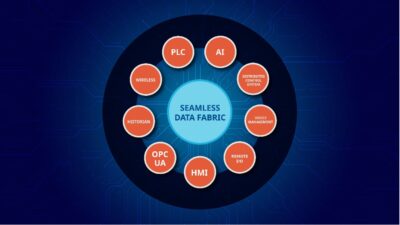Distributed Control System (DCS) technologies have focused recent advancements on improved integration with alarm diagnostic middleware. These improvements allow for easier system deployment, improved performance visibility, better network security, and more versatile operating interfaces. Deployment costs It's no longer necessary to replace hardware from the operator stations down to the regul...
Distributed Control System (DCS) technologies have focused recent advancements on improved integration with alarm diagnostic middleware. These improvements allow for easier system deployment, improved performance visibility, better network security, and more versatile operating interfaces.
Deployment costs
It’s no longer necessary to replace hardware from the operator stations down to the regulatory processing nodes when upgrading control systems. New systems can be layered on existing components, improving functional offerings at a lower cost than past retrofits. This is accomplished through data collection and relay between sub-systems at the communications layer. If legacy investments do not provide alarm and event transmittal in a modern protocol, such as OPC Alarm & Events (OPCAE), this information can be captured by traditional means such as serial, TCP, or ASCII, and re-broadcast in OPCAE to the new system.
Deploying new technology on top of old creates maintenance burden for a hybrid infrastructure. A less significant challenge of spare part availability is addressed by the increased back-end integration breadth of the newer systems. Failing legacy equipment can be replaced by modern counterparts.
As for the middleware deployment, technology trends have veered towards thin-client tools. These improve DCS human-machine interface (HMI) integration. Providing analytical information, such as alarm activity and context sensitive assistance, within an integrated user environment was extremely labor intensive. The advent of certification practices for middleware providers by DCS vendors has eased this burden.
Incentive to resolve alarm system problems increases when they are visible throughout the enterprise. Legacy systems store data in isolated repositories, sometimes within proprietary databases, making it impossible to compare the performance of control-system alarm behavior across vendor platforms. Modern systems store data within relational databases such as SQL and Oracle.
Furthermore, middleware systems now normalize data according to personnel assignment and differentiate between audible and suppressed alarms. Activating these features adds deployment steps, but improves report accuracy and allows easy comparisons to be made across assets. The improved software infrastructure also makes it possible to add alarm-related key performance indicators (KPI) to existing performance dashboards within organizations.
Making information increasingly accessible tends to open vulnerabilities to software vandalism. This is a driver behind more stringent network security models involving multi-tier architectures to protect the control system domain.
Businesses now typically implement three firewall layers between the control system and the Internet. This requires implementing a demilitarized zone (DMZ) between the traditional control local area network (LAN) and its business counterpart. Fortunately, firewall friendly alarm management software exists that allows for flexible network deployment with data collection on the bottom-tier control LAN, data parsing and archiving on the DMZ, and web portal installation on the business LAN.
End-user focus
The primary reason for pursuing new technology is to better use the control system to provide useful and timely information so people can make insightful decisions. Business managers want to compare assets to make pragmatic staffing decisions, engineers want to quickly diagnose and resolve system inefficiencies, and operators need to quickly understand alarm causes and corrective actions. These goals are achieved by providing one user environment within the control system. Modern systems need not make the user aware that data is being fetched from a middleware data repository.
Increased industry awareness of alarm-related problems will keep alarm management a focus for improvement for control system vendors. . This awareness originates with recent and upcoming standards efforts. Namely, the Instrumentation, Systems, and Automation Society’s (ISA) upcoming SP18 standard on alarm management will bring greater emphasis on alarm flood prevention and improved alarm configuration practices. Adhering to such standards has caught the attention of forward-thinking solution providers, resulting in improved ways to address these industry problems.
Michael (“Mik”) Marvan is manager of Matrikon’s Alarm Management products. Roy Tanner is ABB’s systems marketing manager.


